|
This is a catalog of
nationwide "winter" precipitation anomalies for
previous El Niño events. This is a climatological analysis
and not a forecasting tool. Please note that even within a
single category the broad range of conditions; some that are decidedly "atypical".
The
Oceanic Niño Index (ONI)
is used to identify El Niño (warm) and La Niña (cool) events in the
tropical Pacific. The ONI is the running 3-month mean SST anomaly for the
Niño 3.4 region (i.e.,
5°N-5°S, 120°-170°W).
Events are defined as 5 consecutive months at or above the +0.5° anomaly
for warm (El Niño) events and at or below the -0.5° anomaly for cool (La
Niña) events.
El NIño thresholds are broken down into Weak (with a 0.5°
to 0.9° SST anomaly), Moderate (1.0° to 1.4°), Strong (1.5° to 1.9°),
and Very Strong (≥ 2.0°) events. For
the purpose of this report for an event to be weak, moderate, strong or
very strong it
must have equaled or exceeded the higher threshold for at least 3 months.
Weak: 2004-05, 2006-07, 2014-15,
2018-19
Moderate:
1986-87,1994-95,
2002-03, 2009-10
Strong: 1987-88, 1991-92,
2023-24
Very Strong: 1982-83, 1997-98, 2015-16 |
La NIña thresholds are broken
down into Weak (with a -0.5° to -0.9° SST anomaly), Moderate
(-1.0° to -1.4°), Strong (-1.5° to -1.9°) events. For the
purpose of this report for an event to be weak, moderate, strong
or very strong it much have equaled or exceeded the higher
threshold for at least 3 months.
Weak: 1983-84, 1984-85, 2000-01, 2005-06, 2008-09, 2016-17,
2017-18, 2022-23
Moderate:
1995-96, 2011-12, 2020-21, 2021-22
Strong: 1988-89,
1998-99, 1999-00, 2007-08, 2010-11 |
* December through February.
El
Niño Precipitation Anomalies:
Winter (December, January, February)
|
Weak El Niño
(ONI = +0.5 to +0.9
°C) |
|
2004-05 |
2006-07 |
2014-15 |
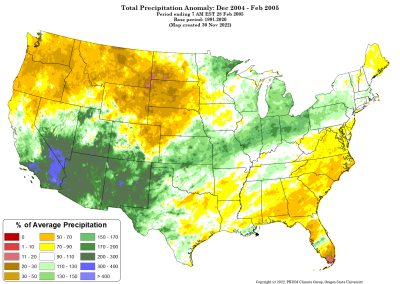 |
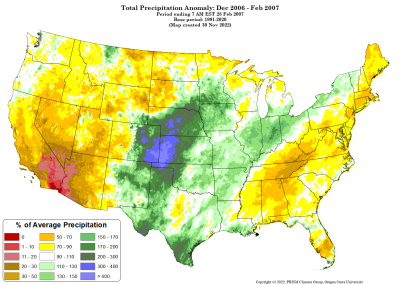 |
 |
|
2018-19 |
|
|
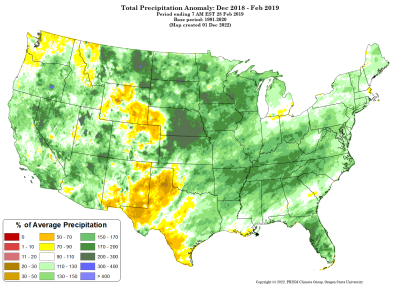 |
|
|
|
|
Moderate El Niño
(ONI = +1.0 to +
1.4 °C) |
|
1986-87 |
1994-95 |
2002-03 |
 |
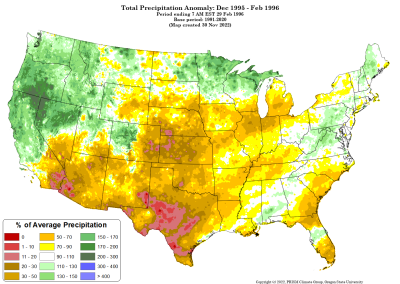 |
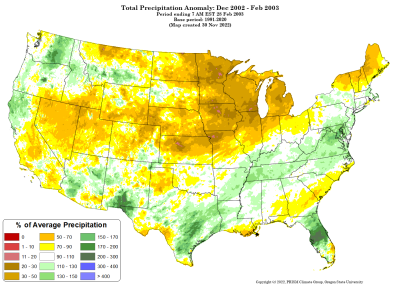 |
|
2009-10 |
|
|
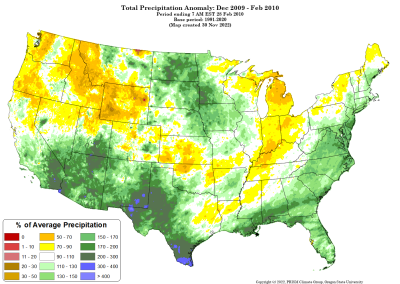 |
|
|
|
|
Strong El Niño
(ONI = +1.5 to +
1.9 °C) |
|
|
|
Very Strong El Niño
(ONI
≥ 2.0 °C) |
|
|
|

